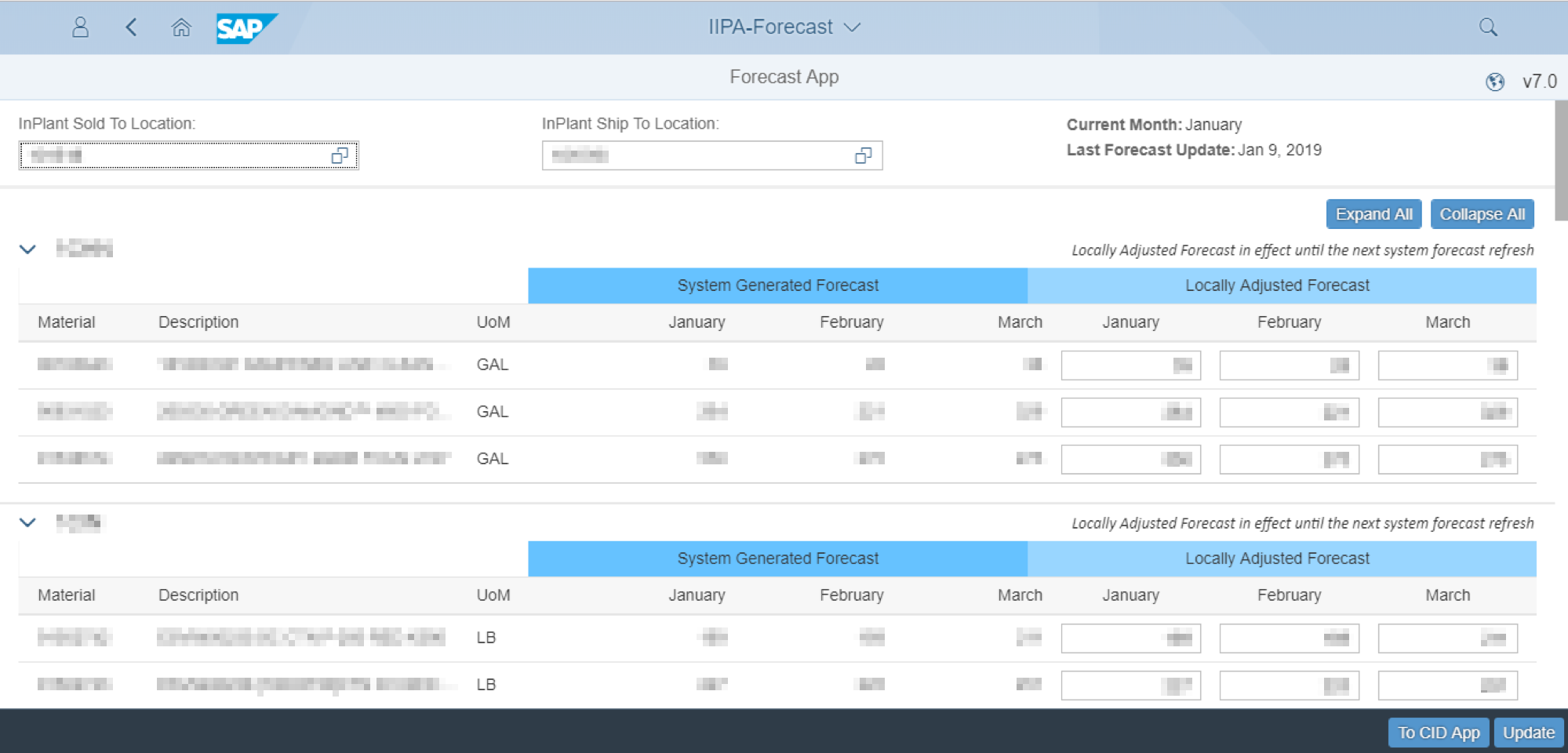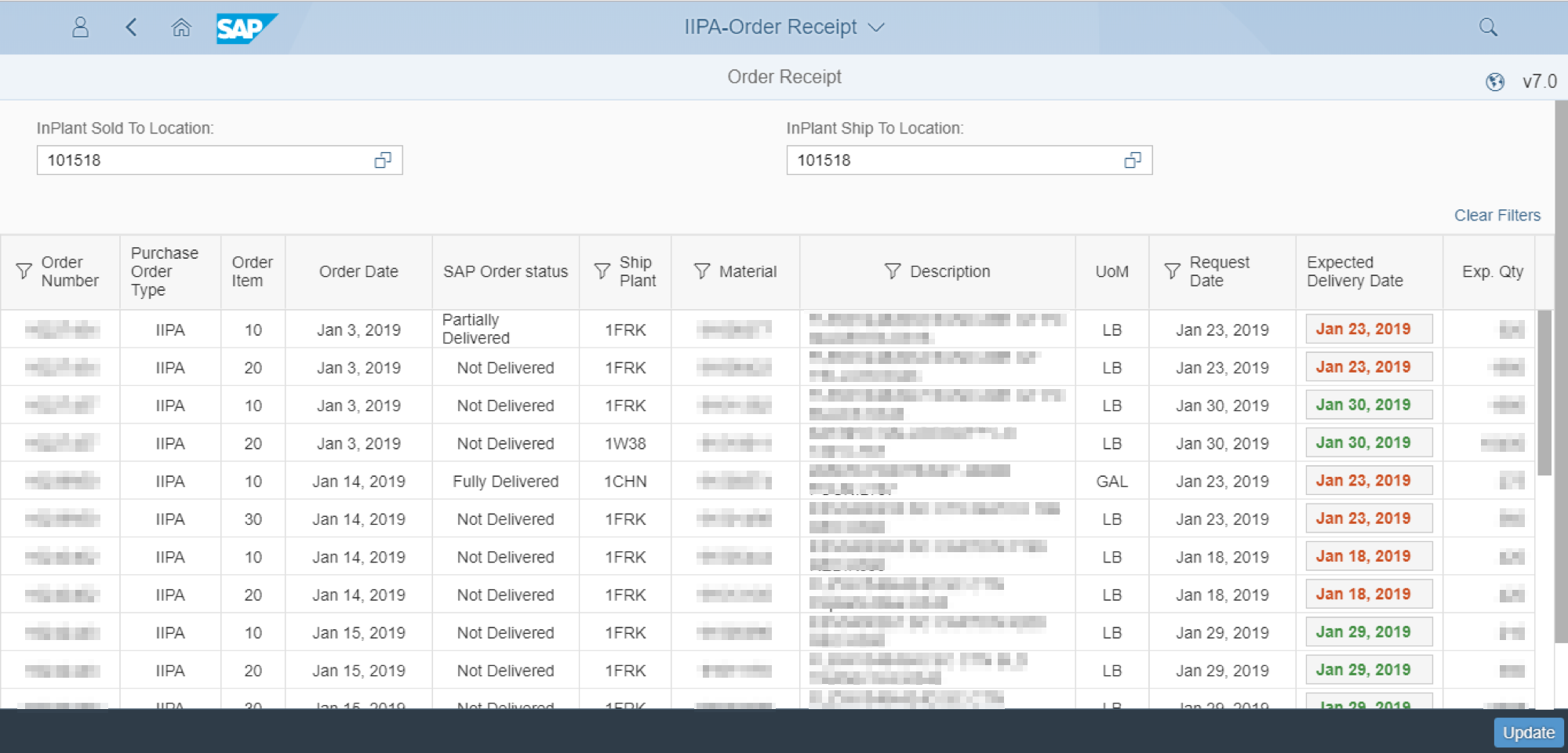
Welcome to this Mindset Blog featuring Hennie Pieters of Sun Chemical. In 2017 Hennie shared his early feedback on a successfully delivered Fiori project for his production business customers
We wanted to revisit the Fiori application a year later to check in on the Business Benefits of the applications. Too often we jump to the next project without taking stock of the last initiative. Hennie helps us realize that value here:
Hennie – the Production Forecasting and Order Consolidation apps we developed together have been live now for over six quarters – can you give us a quick update on the adoption?
Thanks, Peter – we originally went live with a POC version for a single location, and then ramped it to over 100 locations, with about 120 users.

Have you continued to improve the original applications?
Yes, we added functionality to improve the integration between the application and some of our other Fiori applications. In addition, we also completed Phase II functionality which we explicitly excluded in the first version. The bulk of the enhancements centered around usability (filtering and sorting in the tables), providing more SAP data to the users in the app and to accommodate business scenarios not identified during the initial requirements analysis. We continue to use Agile by logging enhancement requests in Jira, prioritizing the backlog with the product owner and then delivering the functionality during 3-4 week sprints. All enhancement work is being performed by our outsourcing partner.
Without giving away any competitive insight, how much value – hard and soft dollars – has these Fiori applications driven internally?
These applications allow us to save on transportation costs through improved planning and forecasting and have recovered the initial cost of the application in its first full year of use.
I think the internal and Mindset cost to deliver was under $200K and delivered nine weeks after we completed our Design Thinking?
Yes – we measured the payback of the project at around 1-year, and the ROI to date is + 350%.
Financially that sounds fantastic. What has been the usability reaction from the business users?
Very good. The application is very intuitive to use and our training focused more on the planning algorithms implemented by the application rather than having to spend a lot of time helping them navigate.
You stated in the original blog posting that “the goodwill and engagement generated by following that (Design Thinking) process with the end users will pay off in the long term.” Has your prognostication been realized?
Yes, very much so. We are now using Design Thinking in all our projects and some of our business stakeholders are actually taking the lead in initiating the sessions and ensuring all stakeholders are presented.

Hennie you’ve been exposed to many Value Engineering, TCO, and other methods to determine go/no-go on innovation projects. For SAP clients perhaps new to Agile-based delivery of Fiori/UX applications, what are the key prerequisites that should be measured or considered before embarking on an SAP Digital Transformation project?
I think it is critically important to be committed to the project. Both business and IT. The business must assign a Product/Project Owner and ensure the owner can participate in the process. IT must be willing to invest in establishing the necessary platform technologies and commit to training employees on the new platform tools and technologies.
Hennie – any other key messaging you’d like to share to IT or business leaders seeking Fiori advantages within an SAP ECC or S/4 environment?
Fiori is here to stay. Whether you’re ready to adopt it or not. SAP is pushing out more and more functionality as Fiori applications. SAP Partners are delivering add-on functionality as Fiori applications. So it is not a question on whether, or if, you need to go to Fiori, you’ll have to use start using Fiori for almost anything new. It is not very complex and there are many good partners and tools available to help you along your Fiori journey. Start … start small, don’t be afraid to fail, and be willing to iterate.
If you are interested in viewing similar articles, visit our blog, here.
View our LinkedIn, here.